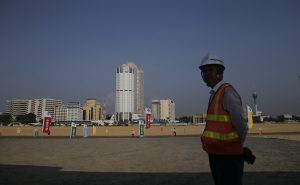Although the Belt and Road Initiative (BRI) was successful in drawing new participants in other parts of the world over the past year, the ambitious Chinese-led initiative saw waning commitment in some of its South Asian members in 2019. This was particularly evident in Pakistan, which has been a strong proponent of the BRI from its inception.
Pakistan responded with great enthusiasm in 2013 when Chinese President Xi Jinping unveiled plans for a 21st Century Silk Road to connect Asia, Africa, and Europe. The Pakistani government signed on to the initiative during Xi’s visit to Islamabad in April 2015, when he pledged around $46 billion – subsequently increased to $62 billion – toward the China-Pakistan Economic Corridor (CPEC), the BRI’s Pakistani component.
CPEC envisioned connecting Kashgar in China’s Xinjiang region with Gwadar port in Pakistan’s Balochistan province through a network of roads, railways, oil and gas pipelines, and fiber optic cables. CPEC would not only give landlocked Kashgar an outlet to the sea, but also establish special economic zones and energy projects along the route, which were expected to boost the beleaguered Pakistani economy. Understandably, CPEC was hailed in Pakistan as a “game-changer,” while China viewed it as the BRI’s flagship venture.
China’s plans for CPEC expanded significantly in the years since. But its impatience with Pakistan failing to meet project deadlines and the dire security situation in the country has intensified as well.
Differences between China and Pakistan have erupted to the surface from time to time. In 2017, for example, Pakistan rejected Chinese funding for the $14-billion Diamer-Bhasha dam project as it was opposed to Beijing’s conditions. A few days later, China announced suspension of funding for at least three road projects in Pakistan.
Such differences have grown since Imran Khan took charge as prime minister in August 2018. His government has criticized CPEC contracts negotiated by his predecessor, Nawaz Sharif, for being overpriced and overly benefitting China.
But there are other reasons for the Khan government’s weakening commitment to CPEC. A severe economic crisis forced it to turn to the International Monetary Fund (IMF) for yet another bailout – the 13th in 30 years. The $6 billion IMF bailout package requires the Pakistani government to put in place austerity measures. Trimming CPEC projects and loans are among its austerity moves.

































